Drug Catalog - Product Detail
ETHYNODIOL DIACETATE/ETHINYL ESTRADROL (KELNOR)) TB 1/35 6X28
| NDC | Mfr | Size | Str | Form |
|---|---|---|---|---|
| 00555-9064-58 | TEVA PHARMACEUTICALS USA | 28 | 1-35MG-MCG | TABLET |
PACKAGE FILES
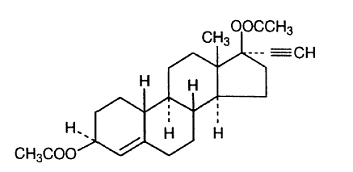
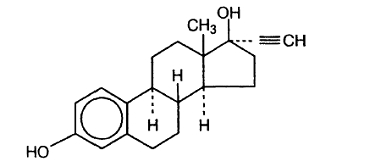

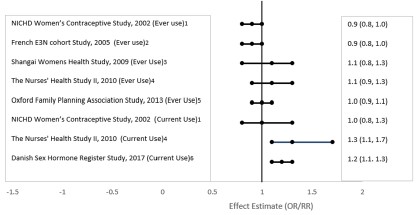
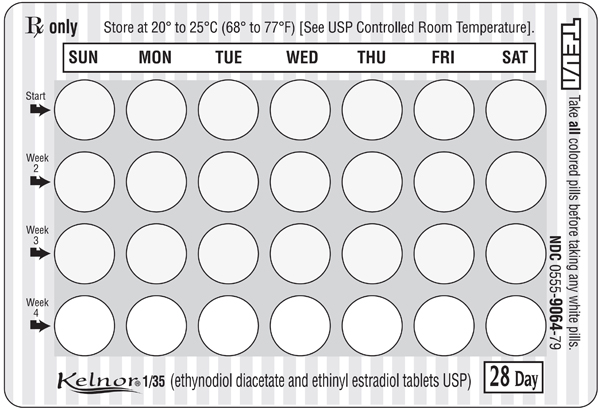
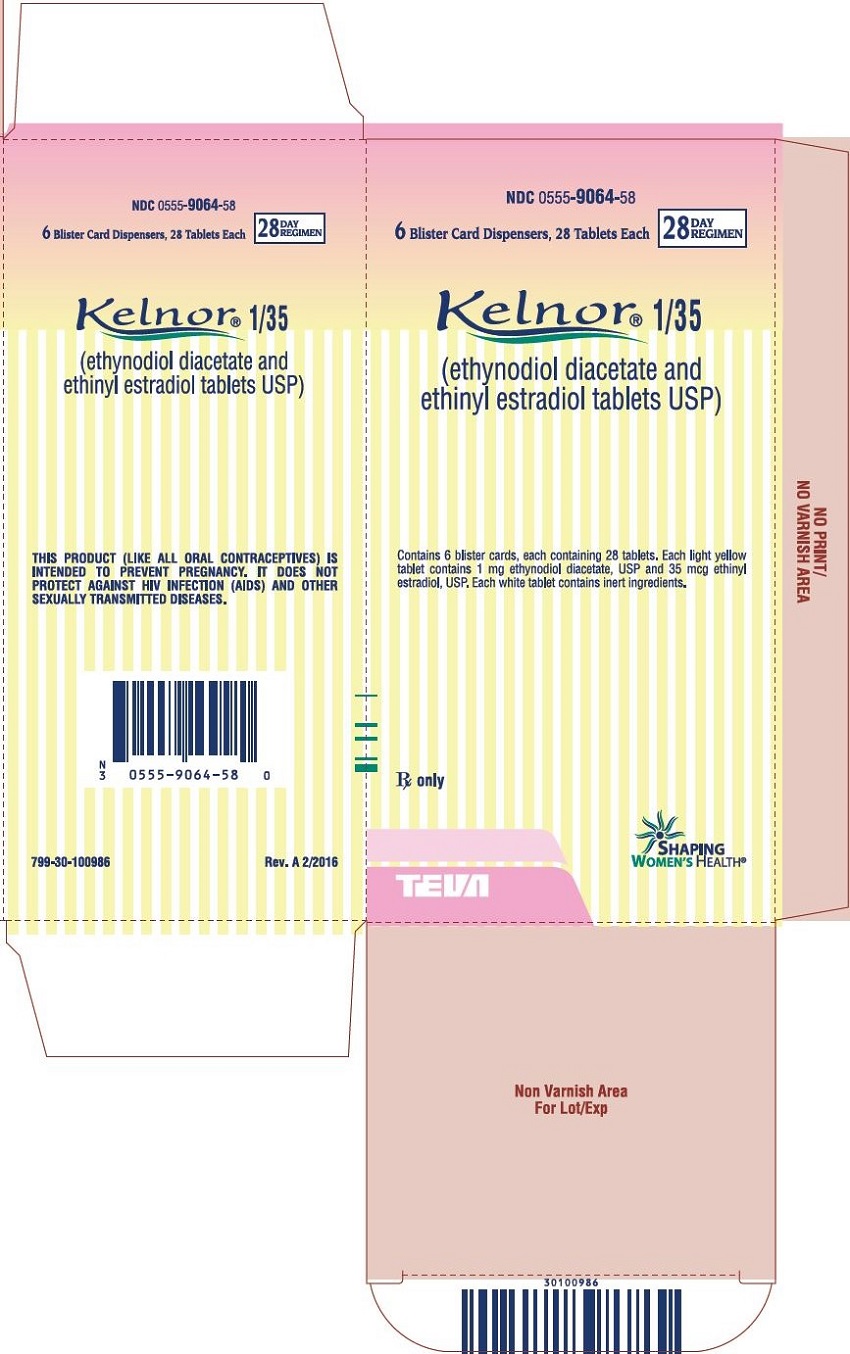
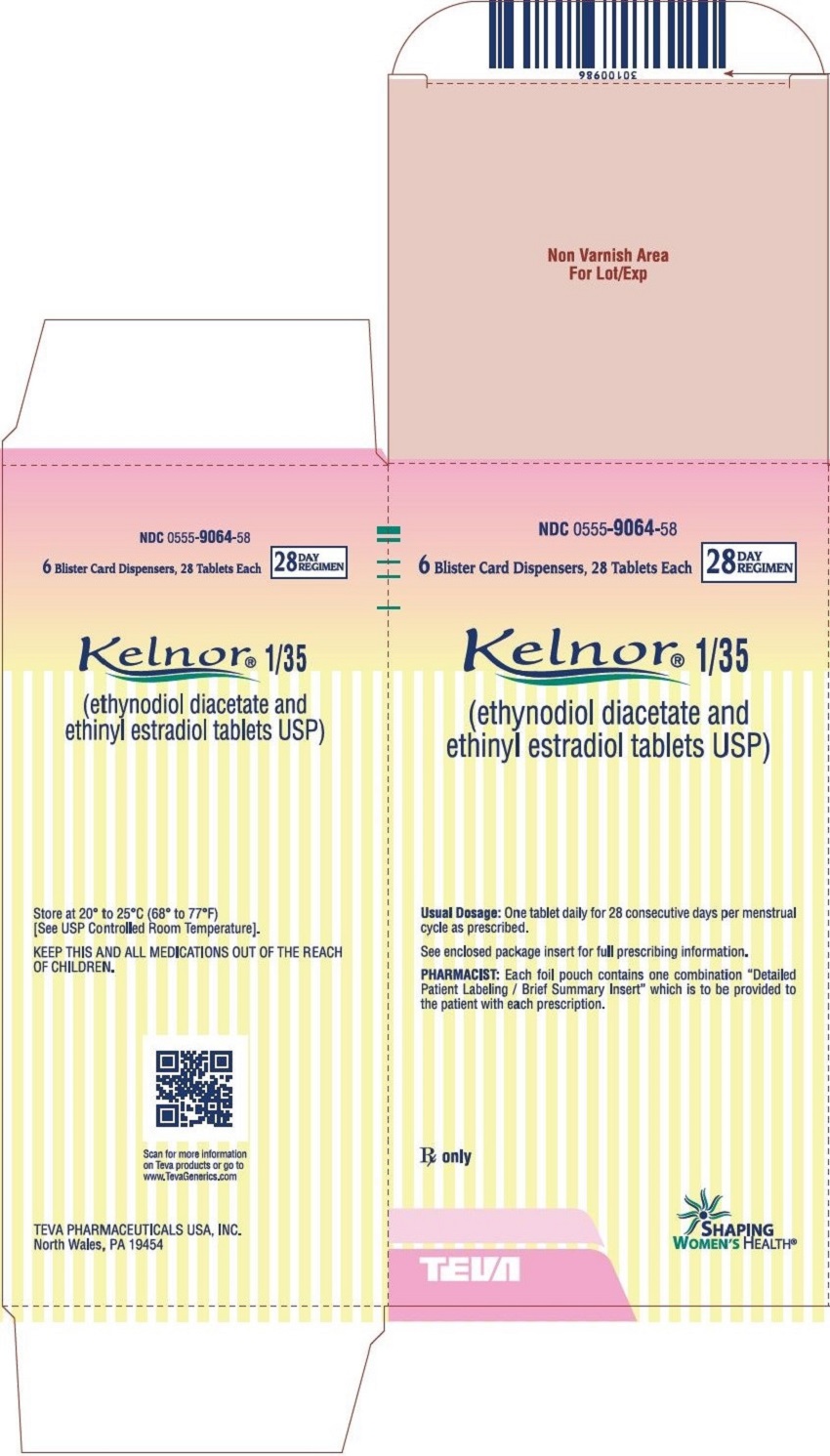
Generic Name
ETHYNODIOL DIACETATE AND ETHINYL ESTRADIOL
Substance Name
Product Type
HUMAN PRESCRIPTION DRUG
Route
Application Number
ANDA076785
Description
DESCRIPTION Kelnor ® 1/35 (28 Day Regimen) (ethynodiol diacetate and ethinyl estradiol tablets USP): Each light yellow tablet contains 1 mg of ethynodiol diacetate, USP and 35 mcg of ethinyl estradiol, USP. The inactive ingredients include anhydrous lactose, D&C yellow no. 10 aluminum lake, magnesium stearate, microcrystalline cellulose, polacrilin potassium, and povidone. Each white tablet is a placebo containing only inert ingredients as follows: anhydrous lactose, hypromellose, magnesium stearate, and microcrystalline cellulose. The chemical name for ethynodiol diacetate, USP is 19-nor-17α-pregn-4-en-20-yne-3β, 17-diol diacetate, and for ethinyl estradiol, USP it is 19-nor-17α-pregna-1, 3, 5 (10)-trien-20-yne-3, 17-diol. The structural formulas are as follows: Ethynodiol Diacetate, USP C 24 H 32 O 4 M.W. 384.51 Ethinyl Estradiol, USP C 20 H 24 O 2 M.W. 296.40 Ethynodiol Diacetate structural formula Ethinyl Estradiol structural formula
How Supplied
HOW SUPPLIED Kelnor ® 1/35 (28 Day Regimen) (ethynodiol diacetate and ethinyl estradiol tablets USP) is packaged in cartons of six blister card dispensers. Each blister card dispenser contains 21 light yellow, round, flat-faced, beveled-edge, unscored tablets, debossed with stylized b on one side and 14 on the other side and 7 white, round, flat-faced, beveled-edge, unscored placebo tablets, debossed with stylized b on one side and 143 on the other side. Each light yellow tablet contains 1 mg of ethynodiol diacetate, USP and 0.035 mg of ethinyl estradiol, USP. Each white tablet contains inert ingredients. Available in cartons of six blisters NDC 0555-9064-58 Store at 20° to 25°C (68° to 77°F) [See USP Controlled Room Temperature]. KEEP THIS AND ALL MEDICATIONS OUT OF THE REACH OF CHILDREN.
Indications & Usage
INDICATIONS AND USAGE Kelnor 1/35 (28 Day Regimen) (ethynodiol diacetate and ethinyl estradiol tablets) is indicated for the prevention of pregnancy in women who elect to use oral contraceptives as a method of contraception. Oral contraceptives are highly effective. Table 1 lists the typical accidental pregnancy rates for users of combination oral contraceptives and other methods of contraception. The efficacy of these contraceptive methods, except sterilization and progestogen implants and injections, depends upon the reliability with which they are used. Correct and consistent use of methods can result in lower failure rates. TABLE 1: PERCENTAGE OF WOMEN EXPERIENCING AN UNINTENDED PREGNANCY DURING THE FIRST YEAR OF TYPICAL USE AND THE FIRST YEAR OF PERFECT USE OF CONTRACEPTION AND THE PERCENTAGE CONTINUING USE AT THE END OF THE FIRST YEAR. UNITED STATES. % of Women Experiencing an Unintended Pregnancy Within the First Year of Use % of Women Continuing Use at One Year 1 Method (1) Typical Use 2 (2) Perfect Use 3 (3) (4) Chance 4 85 85 Spermicides 5 26 6 40 Periodic abstinence 25 63 Calendar 9 Ovulation method 3 Sympto-thermal 6 2 Post-ovulation 1 Withdrawal 19 4 Cap 7 Parous women 40 26 42 Nulliparous women 20 9 56 Sponge Parous women 40 20 42 Nulliparous women 20 9 56 Diaphragm 7 20 6 56 Condom 8 Female (Reality ® ) 21 5 56 Male 14 3 61 Pill 5 71 Progestin only 0.5 Combined 0.1 IUD Progesterone T 2 1.5 81 Copper T 380A 0.8 0.6 78 LNg 20 0.1 0.1 81 Injection (Depo-Provera ® ) 0.3 0.3 70 Implant (Norplant ® and Norplant-2 ® ) 0.05 0.05 88 Female sterilization 0.5 0.5 100 Male sterilization 0.15 0.1 100 Emergency Contraceptive Pills: Treatment initiated within 72 hours after unprotected intercourse reduces the risk of pregnancy by at least 75%. 9 Lactational Amenorrhea Method: LAM is a highly effective, temporary method of contraception. 10 Source: Trussell J, Contraceptive efficacy. In Hatcher RA, Trussell J, Stewart F, Cates W, Stewart GK, Kowal D, Guest F, Contraceptive Technology: Seventeenth Revised Edition . New York, NY: Irvington Publishers, 1998, in press. 1 1. Among couples attempting to avoid pregnancy, the percentage who continue to use a method for one year. 2. Among typical couples who initiate use of a method (not necessarily for the first time), the percentage who experience an accidental pregnancy during the first year if they do not stop use for any other reason. 3. Among couples who initiate use of a method (not necessarily for the first time) and who use it perfectly (both consistently and correctly), the percentage who experience an accidental pregnancy during the first year if they do not stop use for any other reason. 4. The percents becoming pregnant in columns (2) and (3) are based on data from populations where contraception is not used and from women who cease using contraception in order to become pregnant. Among such populations, about 89% become pregnant within one year. This estimate was lowered slightly (to 85%) to represent the percent who would become pregnant within one year among women now relying on reversible methods of contraception if they abandoned contraception altogether. 5. Foams, creams, gels, vaginal suppositories, and vaginal film. 6. Cervical mucus (ovulation) method supplemented by calendar in the pre-ovulatory and basal body temperature in the post-ovulatory phases. 7. With spermicidal cream or jelly. 8. Without spermicides. 9. The treatment schedule is one dose within 72 hours after unprotected intercourse, and a second dose 12 hours after the first dose. The Food and Drug Administration has declared the following brands of oral contraceptives to be safe and effective for emergency contraception: Ovral ® (1 dose is 2 white pills), Alesse ® (1 dose is 5 pink pills), Nordette ® or Levlen ® (1 dose is 2 light-orange pills), Lo/Ovral ® (1 dose is 4 white pills), Triphasil ® or Tri-Levlen ® (1 dose is 4 yellow pills). 10. However, to maintain effective protection against pregnancy, another method of contraception must be used as soon as menstruation resumes, the frequency or duration of breastfeeds is reduced, bottle feeds are introduced, or the baby reaches six months of age.
Dosage and Administration
DOSAGE AND ADMINISTRATION To achieve maximum contraceptive effectiveness, oral contraceptives must be taken exactly as directed and at intervals of 24 hours. IMPORTANT: If the Sunday start schedule is selected, the patient should be instructed to use an additional method of protection until after the first week of administration in the initial cycle. The possibility of ovulation and conception prior to initiation of use should be considered. Kelnor 1/35 (28 Day Regimen) (ethynodiol diacetate and ethinyl estradiol tablets) Dosage Schedule The Kelnor 1/35 (28 Day Regimen) tablet dispenser contains 21 light yellow active tablets arranged in three numbered rows of 7 tablets each, followed by a fourth row of 7 white placebo tablets. Days of the week are printed above the tablets, starting with Sunday on the left. 28 Day Schedule For a DAY 1 START, count the first day of menstrual flow as Day 1 and the first tablet (light yellow) is then taken on Day 1. For a SUNDAY START when menstrual flow begins on or before Sunday, the first tablet (light yellow) is taken on that day. With either a DAY 1 START or SUNDAY START, 1 tablet (light yellow) is taken each day at the same time for 21 days. Then the white tablets are taken for 7 days, whether bleeding has stopped or not. After all 28 tablets have been taken, whether bleeding has stopped or not, the same dosage schedule is repeated beginning on the following day. Special Notes Spotting, Breakthrough Bleeding, or Nausea If spotting (bleeding insufficient to require a pad), breakthrough bleeding (heavier bleeding similar to a menstrual flow), or nausea occurs the patient should continue taking her tablets as directed. The incidence of spotting, breakthrough bleeding or nausea is minimal, most frequently occurring in the first cycle. Ordinarily spotting or breakthrough bleeding will stop within a week. Usually the patient will begin to cycle regularly within two to three courses of tablet-taking. In the event of spotting or breakthrough bleeding organic causes should be borne in mind. (See WARNINGS , No. 12 .) Missed Menstrual Periods Withdrawal flow will normally occur 2 or 3 days after the last active tablet is taken. Failure of withdrawal bleeding ordinarily does not mean that the patient is pregnant, providing the dosage schedule has been correctly followed. (See WARNINGS , No. 7 .) If the patient has not adhered to the prescribed dosage regimen, the possibility of pregnancy should be considered after the first missed period, and oral contraceptives should be withheld until pregnancy has been ruled out. If the patient has adhered to the prescribed regimen and misses two consecutive periods, pregnancy should be ruled out before continuing the contraceptive regimen. The first intermenstrual interval after discontinuing the tablets is usually prolonged; consequently, a patient for whom a 28 day cycle is usual might not begin to menstruate for 35 days or longer. Ovulation in such prolonged cycles will occur correspondingly later in the cycle. Posttreatment cycles after the first one, however, are usually typical for the individual woman prior to taking tablets. (See WARNINGS , No. 12 .) Missed Tablets If a woman misses taking one active tablet, the missed tablet should be taken as soon as it is remembered. In addition, the next tablet should be taken at the usual time. If two consecutive active tablets are missed in week 1 or week 2 of the dispenser, the dosage should be doubled for the next 2 days. The regular schedule should then be resumed, but an additional method of protection must be used as backup for the next 7 days if she has sex during that time or she may become pregnant. If two consecutive active tablets are missed in week 3 of the dispenser or three consecutive active tablets are missed during any of the first 3 weeks of the dispenser, direct the patient to do one of the following: Day 1 Starters should discard the rest of the dispenser and begin a new dispenser that same day; Sunday Starters should continue to take 1 tablet daily until Sunday, discard the rest of the dispenser and begin a new dispenser that same day. The patient may not have a period this month; however, if she has missed two consecutive periods, pregnancy should be ruled out. An additional method of protection must be used as a backup for the next 7 days after the tablets are missed if she has sex during that time or she may become pregnant. While there is little likelihood of ovulation if only one active tablet is missed, the possibility of spotting or breakthrough bleeding is increased and should be expected if two or more successive active tablets are missed. However, the possibility of ovulation increases with each successive day that scheduled active tablets are missed. If one or more placebo tablets of Kelnor are missed, the Kelnor schedule should be resumed on the eighth day after the last light yellow tablet was taken. Omission of placebo tablets in the 28 tablet courses does not increase the possibility of conception provided that this schedule is followed.
